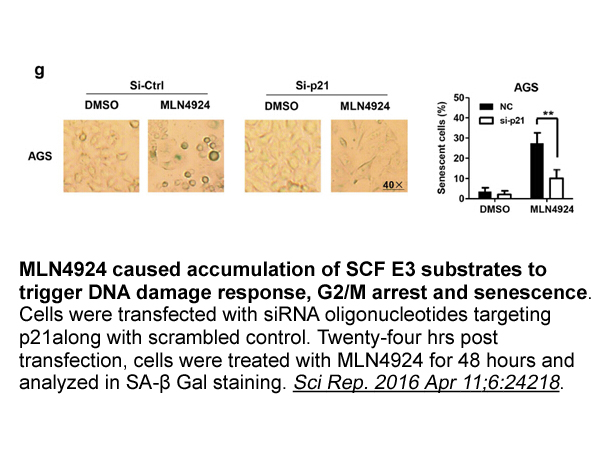Archives
br Results and discussion br Conclusion A series of
Results and discussion
Conclusion
A series of aminobenzothiazole derivatives were investigated as possible Aurora B kinase inhibitors. Bioisosteric replacement of the heterocyclic core of the lead compound was performed regarding the docking analysis. Replacement of the oxygen Iodophenpropit dihydrobromide australia of the bicyclic heterocycle with sulfur enhanced the inhibitory activity and the selectivity for Aurora B kinase. The SAR results implied the importance of the phenylureido moiety as a linker and the docking analysis provided an insight into their possible interaction with Aurora B kinase. The potent compounds were selected and their intrinsic enzyme inhibitory activity was evaluated in HeLa cells. Compounds 15g and 15k decreased the cellular phosphorylation level and arrested the mitotic progression at the G2/M phase. These results suggest that our compounds have a potential for further development of chemotherapeutic agent.
Experimental
Acknowledgments
We dedicate this article to Professor Young-Ger Suh on the occasion of his retirement. This research was supported by the National Research Foundation of Korea (NRF) grant funded by the Korea government (MSIP) (No. 2011-0030074 and 2014R1A2A1A11052761).
Introduction
Cancer is a state of disease where un-control cell proliferation occurs in body. Over 23-million people were diagnosed with cancer in report published by cancer research UK. Among them, one third of cancer patients are not estimated to survive [1]. These numbers make cancer the second most prevalent cause of death in current scenario. Newer strategies are currently designed for treatment over traditional systemic chemotherapy. Following few strategies will design the mainstay for cancer treatment. Anti-mitotic agents, which disrupted mitotic spindle assembly, are commonly used to treat almost all types of cancer. Taxol derivatives (derived from vinca alkaloids) are traditional anti-mitotic agents [2], proved as successful agents in the clinical studies for cancer treatment. Similarly, kinase inhibitors also played crucial role in development of anti-cancer agents. Common  targets for this strategy are Aurora kinase and Polo like kinase, which shared functions of mitosis during cell division [3]. Mechanism of both these kinases are very interesting which fuelled by the idea that these kinases have unique functions in mitosis. Aurora kinase plays important role throughout mitosis and much more focused in the study than polo like kinase [4].
Aurora kinase was found and identified in Drosophila in 1995 and is a member of enzymes serine/threonine kinase family which controls cell division. It is involved in G2/M phase of the cell cycle and its regulation process is observed during complete cell cycle. Three Aurora kinases were identified from this family as Aurora- A, Aurora- B and Aurora- C in mammals [5]. These kinases play vital role in proliferation through mitotic phase of cell cycle and these process are regulated by various other mechanisms. Aurora-A and Aurora-B kinases are different in functionality and in sub-cellular localization. Aurora-C is present in mammals and expressed in testis. All three Aurora kinases have key
targets for this strategy are Aurora kinase and Polo like kinase, which shared functions of mitosis during cell division [3]. Mechanism of both these kinases are very interesting which fuelled by the idea that these kinases have unique functions in mitosis. Aurora kinase plays important role throughout mitosis and much more focused in the study than polo like kinase [4].
Aurora kinase was found and identified in Drosophila in 1995 and is a member of enzymes serine/threonine kinase family which controls cell division. It is involved in G2/M phase of the cell cycle and its regulation process is observed during complete cell cycle. Three Aurora kinases were identified from this family as Aurora- A, Aurora- B and Aurora- C in mammals [5]. These kinases play vital role in proliferation through mitotic phase of cell cycle and these process are regulated by various other mechanisms. Aurora-A and Aurora-B kinases are different in functionality and in sub-cellular localization. Aurora-C is present in mammals and expressed in testis. All three Aurora kinases have key  role in controlling chromosome arrangements and to check proper formation of the mitotic spindle apparatus which occurs during separation of chromosomes into two daughter cells [6], [7], [8]. Deregulation of cell cycle is seen evidently when level of Aurora kinases increase and thus these kinases are important targets for researchers to find small molecules to inhibit over expression of Aurora kinases [9].
Aurora-A kinase activates along with several co-factors during cell division. These cofactors are BORA, TPX2, astrin, ajuba, enhancer of filamentation 1 and transforming acidic coiled-coil containing protein 3 (TACC3) [10], [11], [12]. Main functions of Aurora-A are related to centrosome and spindle assembly where it localizes near to centrosomes and spindle poles. Aurora-A drives centrosome maturation, separation and bipolar spindle assembly. Inhibition of this Aurora-A leads to chromosome segregation defects and abnormal mitotic spindles followed by aneuploidy of cells [13], [14], [15].
role in controlling chromosome arrangements and to check proper formation of the mitotic spindle apparatus which occurs during separation of chromosomes into two daughter cells [6], [7], [8]. Deregulation of cell cycle is seen evidently when level of Aurora kinases increase and thus these kinases are important targets for researchers to find small molecules to inhibit over expression of Aurora kinases [9].
Aurora-A kinase activates along with several co-factors during cell division. These cofactors are BORA, TPX2, astrin, ajuba, enhancer of filamentation 1 and transforming acidic coiled-coil containing protein 3 (TACC3) [10], [11], [12]. Main functions of Aurora-A are related to centrosome and spindle assembly where it localizes near to centrosomes and spindle poles. Aurora-A drives centrosome maturation, separation and bipolar spindle assembly. Inhibition of this Aurora-A leads to chromosome segregation defects and abnormal mitotic spindles followed by aneuploidy of cells [13], [14], [15].